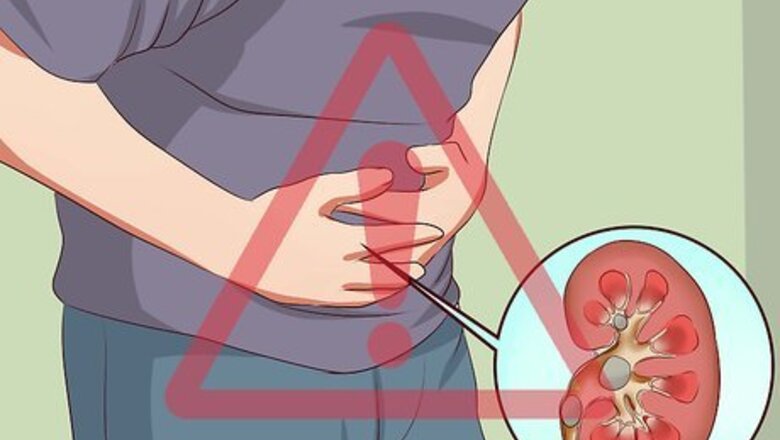
views
X
Trustworthy Source
National Institute of Diabetes and Digestive and Kidney Diseases
Health information from the National Institute of Diabetes and Digestive and Kidney Diseases, a division of the U.S. National Institutes of Health
Go to source
If you do in fact have an obstruction caused by a kidney stone, you will need to receive treatment for this, most likely in the hospital setting.
Recognizing Signs and Symptoms
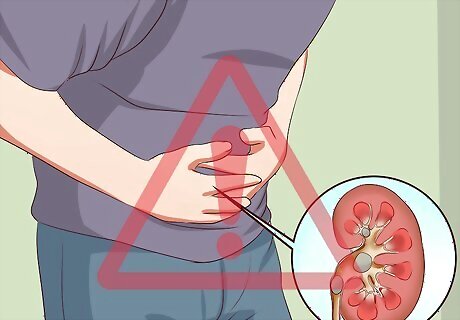
Watch for pain. One of the defining features of renal colic (kidney stones) is that they can cause severe pain when they get stuck and cause an obstruction. The pain is usually located in the "flank" area (on your side, between your rib and your hip). It may also be located in your lower abdomen. It may move toward your groin with time. The pain of renal colic characteristically goes in "waves" of being a little bit better and then worse again, continuing in this pattern. Often, it is more painful for people to sit still or lie down; the pain may be somewhat alleviated by moving around.
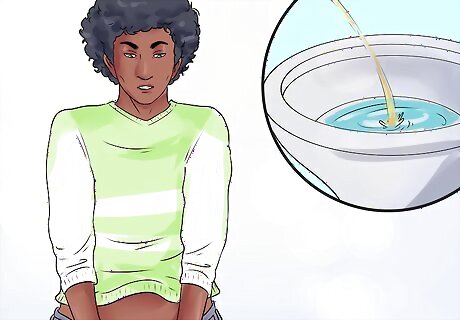
Look for blood in your urine. Blood in the urine is another characteristic of renal colic (kidney stones)l however, there is one caveat to noticing it: the blood may or may not be visible to the naked eye. If it is visible, your urine will likely be a pink or reddish color. If you do not see any changes to your urine color, but are experiencing pain and other symptoms suggestive of renal colic, your doctor can test your urine and pick up microscopic traces of blood in it that may not have been visible to the naked eye.

Take note of other urinary symptoms. In addition to blood in your urine, many people with renal colic (kidney stones) experience other urinary symptoms. These may include: An urgent need to urinate Pain with urination Nausea and/or vomiting A "gravel" appearance to their urine, which may indicate the passage of small stones

Consider your risk factors. Your likelihood of having kidney stones also increases in proportion to your risk factors. These include: A personal history of kidney stones in the past A family history of kidney stones Being overweight Dietary factors — if your diet is particularly high in protein, sugar, and/or sodium, your risk of kidney stones increases Dehydration, which predisposes you to the formation of kidney stones Certain gastrointestinal diseases and or surgeries that affect nutrient and water absorption (such as Crohn's disease, ulcerative colitis, chronic diarrhea, or having received gastric bypass surgery) Other medical conditions (such as hyperparathyroidism, cystinuria, renal tubular acidosis — a form of kidney disease, as well as taking certain medications and/or having certain types of urinary tract infections)
Investigating Further
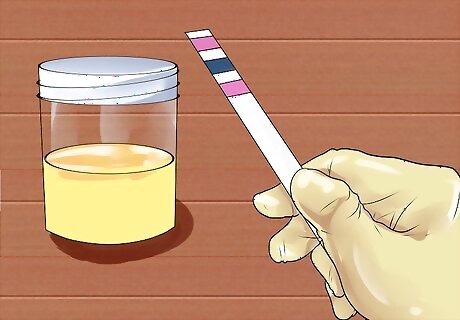
Have a "urinalysis" (urine test). If your doctor suspects that you may have kidney stones, she will perform a "urinalysis," which assesses various aspects of your urine. If the results are suggestive of possible renal colic, your doctor will proceed with specific imaging tests to look for a kidney stone that may be causing an obstruction and leading to your pain.
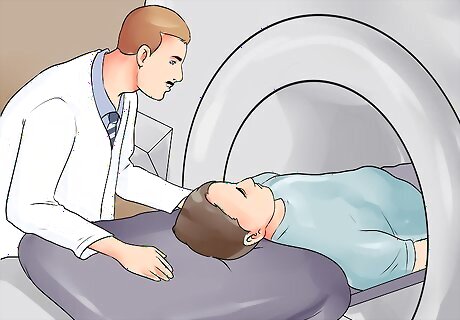
Receive a CT scan. A specialized type of CT scan — a "non contrast helical CT" — is the imaging test of choice in the diagnosis of renal colic. This is because it provides the best view of kidney stones, if they are in fact present and causing an obstruction, and allows your doctor to confirm the diagnosis of renal colic. A CT scan can be done in the Emergency Department, usually within a few hours of your arrival (when a condition is deemed "urgent," a CT scan can normally be received right away without needing to go on a wait list). You will be lying down for your CT scan, and you will be in a large, circular machine for a few minutes while the images are being captured. There is plenty of space in a CT scanner (unlike an MRI, which is very enclosed), so problems with claustrophobia are rare when receiving a CT scan. You will not feel anything while the images are being taken; the images are taken via radiation so it is a completely painless experience.
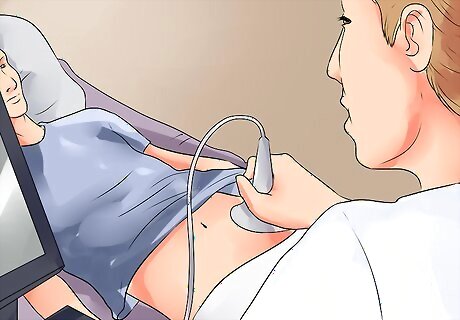
Ask your doctor for an ultrasound. If you are someone who is advised to minimize your exposure to radiation (such as a pregnant person or a child), your doctor may recommend an ultrasound as opposed to a CT scan to evaluate for the presence of kidney stones. While an ultrasound is not as effective as a non-contrast helical CT scan at locating and diagnosing kidney stones, it can detect them in most cases of renal colic and is oftentimes sufficient to make the diagnosis. If the diagnosis remains unclear after receiving an ultrasound exam, your doctor may recommend that you proceed with the CT scan anyway.
Treating Renal Colic
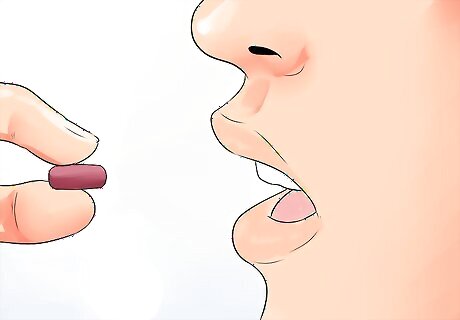
Determine whether or not you can be "treated at home." If your pain and/or nausea is severe, you will most likely be treated in the hospital setting. You will also need to be treated in the hospital if you have a fever, due to the risk of an infection that could spread to your bloodstream (and potentially be life-threatening if not treated as quickly as possible). If none of these things are the case for you, however, you can proceed with home treatment as follows under close guidance of your physician: Oral pain medications such as Ibuprofin (Advil, Motrin) are commonly recommended to ease your pain, if and when needed. Tamsulosin is another medication that is often recommended to increase the speed at which your kidney stones pass. Your doctor may ask that you "strain" your urine so that, when the stone passes, you can collect it and bring it into your doctor for examination. Determining what the stone is composed of (oxalate, uric acid, calcium, etc.) can help your doctor to come up with preventative strategies for you, that will decrease your risk of developing future kidney stones.

Opt for pain medications. If you are in severe pain, your doctor will most likely offer you narcotics such as codeine or morphine to get your symptoms under control. The pain of renal colic can be very debilitating, so pain medications are given promptly to ease your suffering.
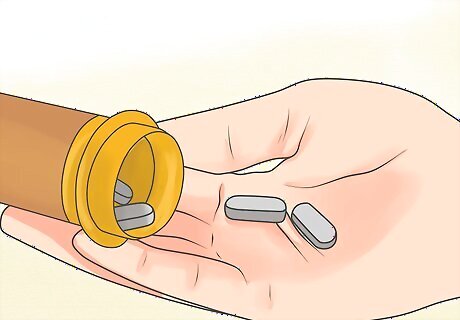
Ask your doctor for anti-nausea medications. If you are experiencing severe nausea and/or vomiting, you can also be given an anti-nausea medication (antiemetics). Examples include ondansetron (Zofran) or dimenhydrinate (Gravol).

Receive IV fluids to stay hydrated. If you are being treated in hospital, you will most likely be hooked up to an IV where you will receive all necessary fluids, calories, and many of your medications (including pain medications and anti-nausea medications). This is because, if you are nauseous and in pain, it will be very challenging for you to eat or drink anything. Therefore, having all of these needs met through an IV line will keep things much simpler and ensure the fastest recovery for you. If you begin to show signs of an infection, you may also be given antibiotics through the IV to ensure that the infection does not progress to your bloodstream.
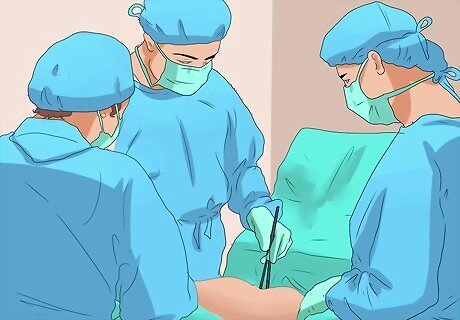
Have a procedure to remove your kidney stone if it is too large to pass on its own. Your doctor may advise "shock wave lithotripsy" to break up the stone into smaller fragments, or "percutaneous nephrolithotomy" for larger or more complex stones that need to be removed surgically. "Ureteroscopy" may also be done as a procedure to remove a kidney stone. The method of choice will depend upon the size and location of your kidney stone.

















Comments
0 comment